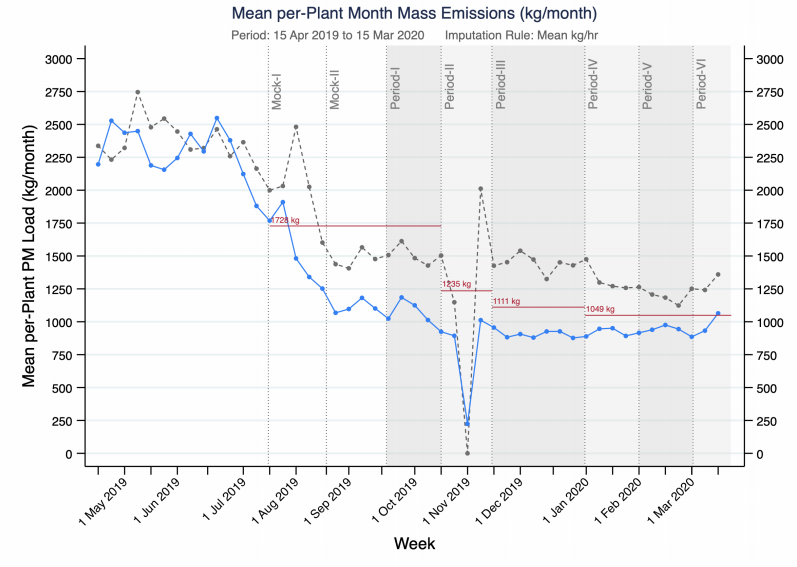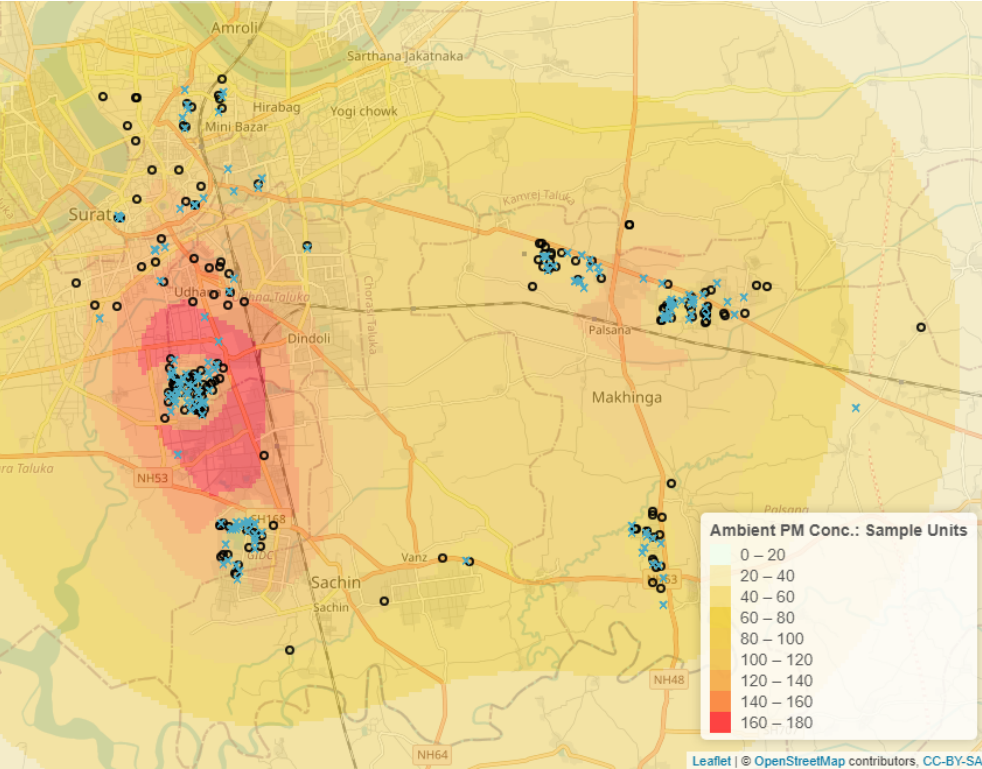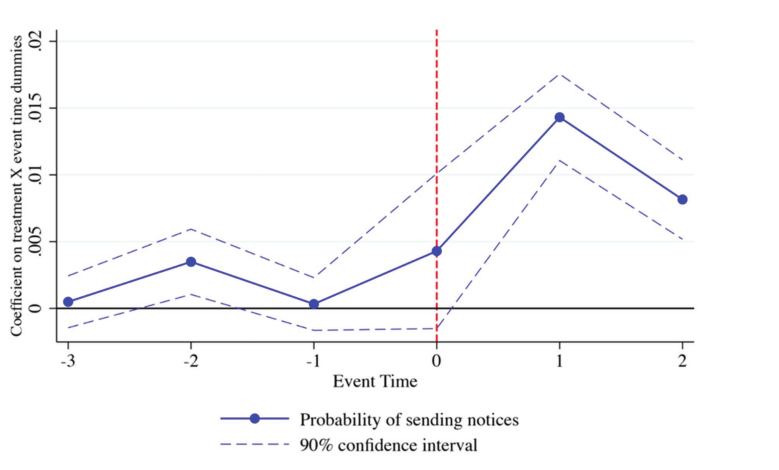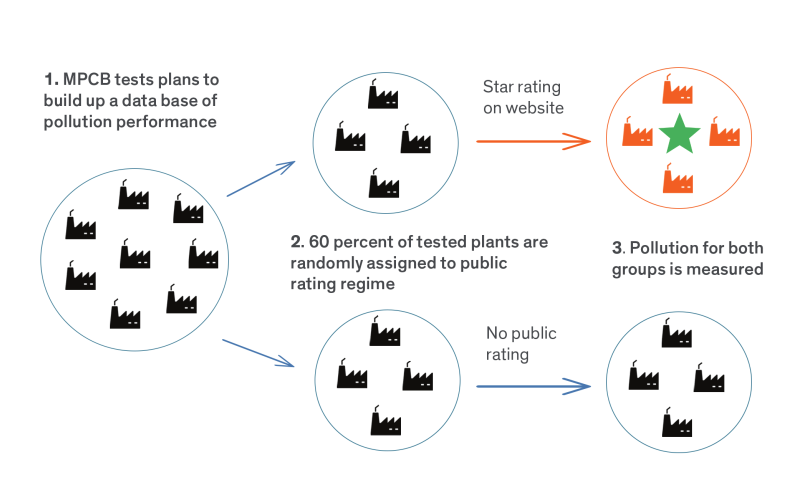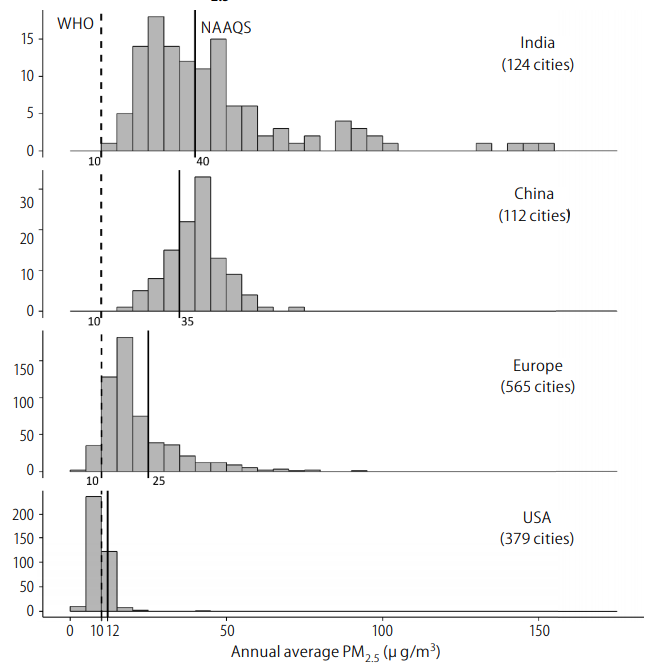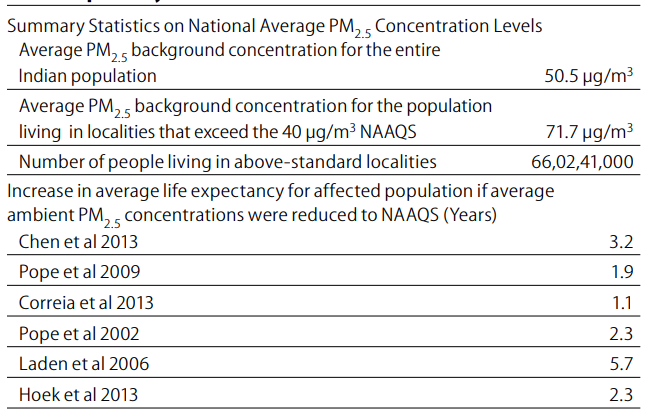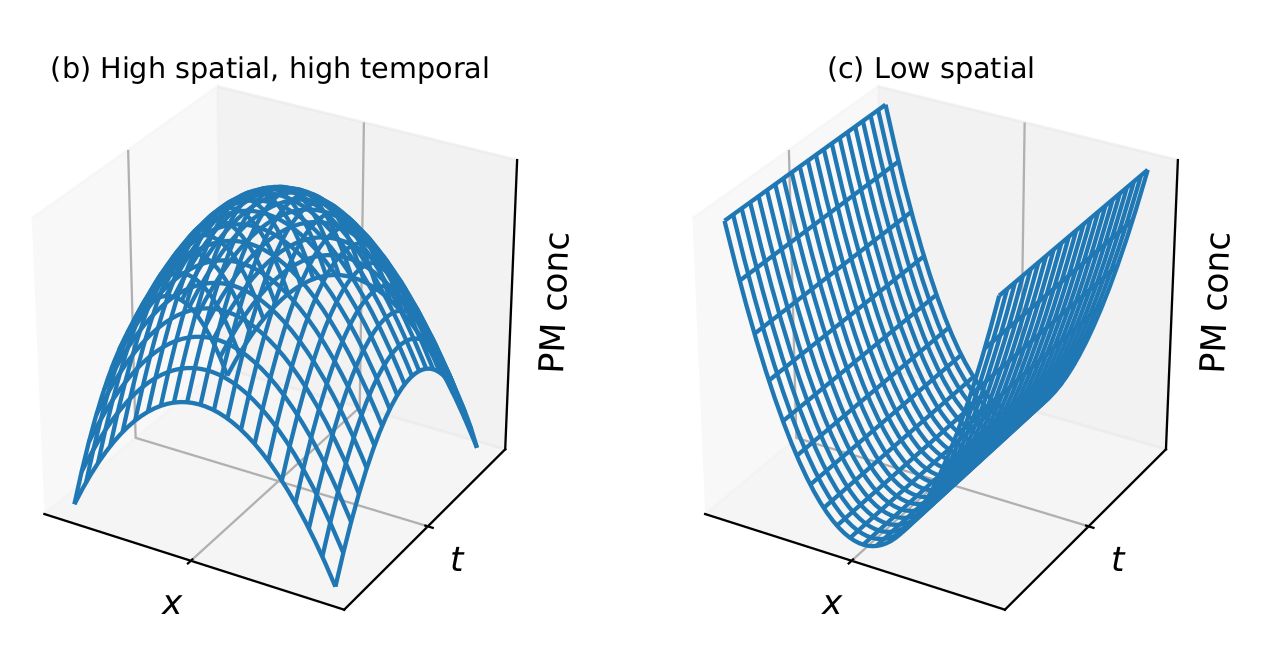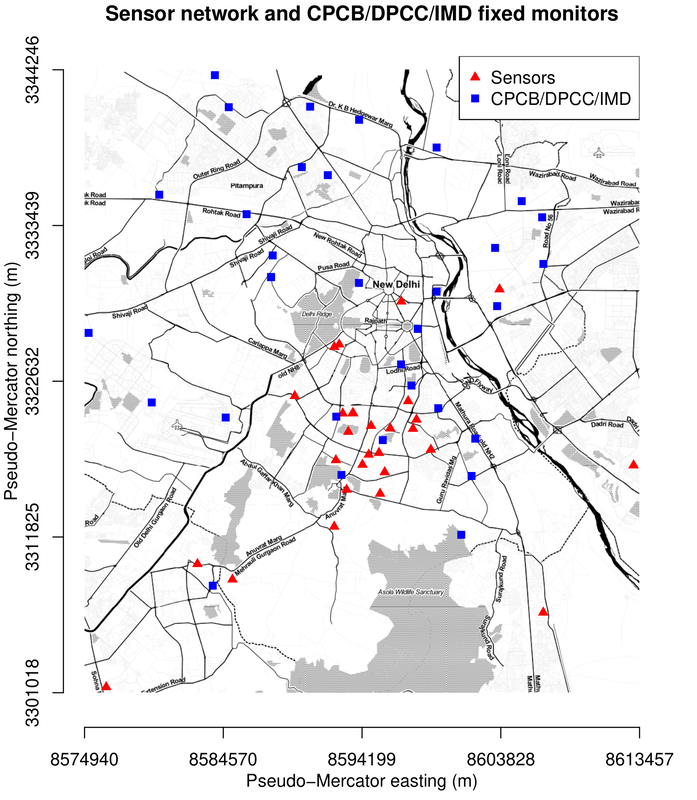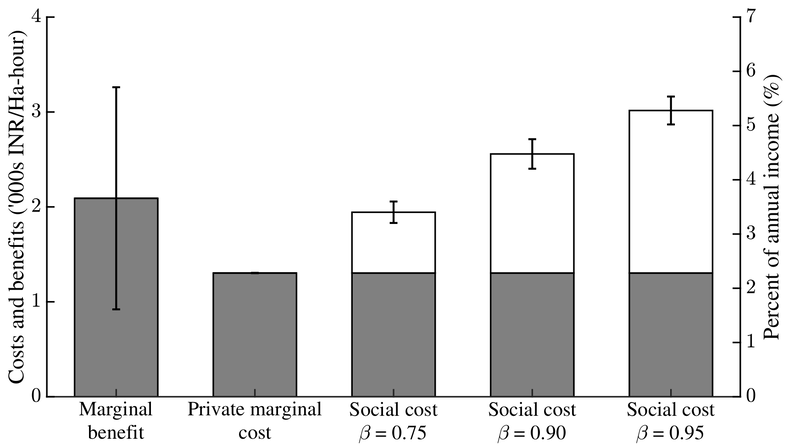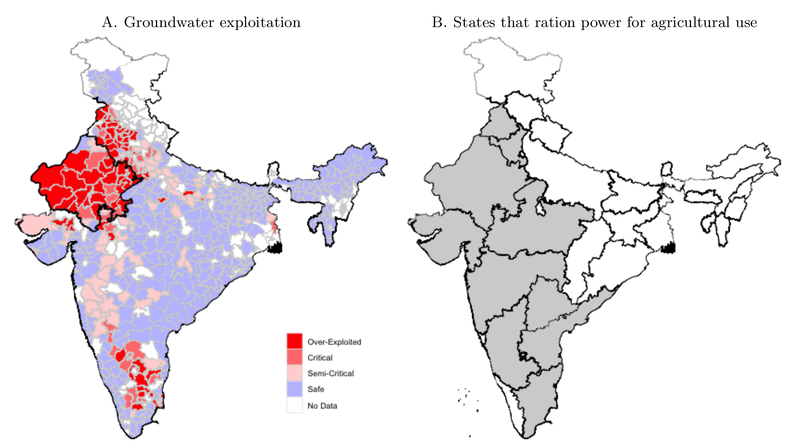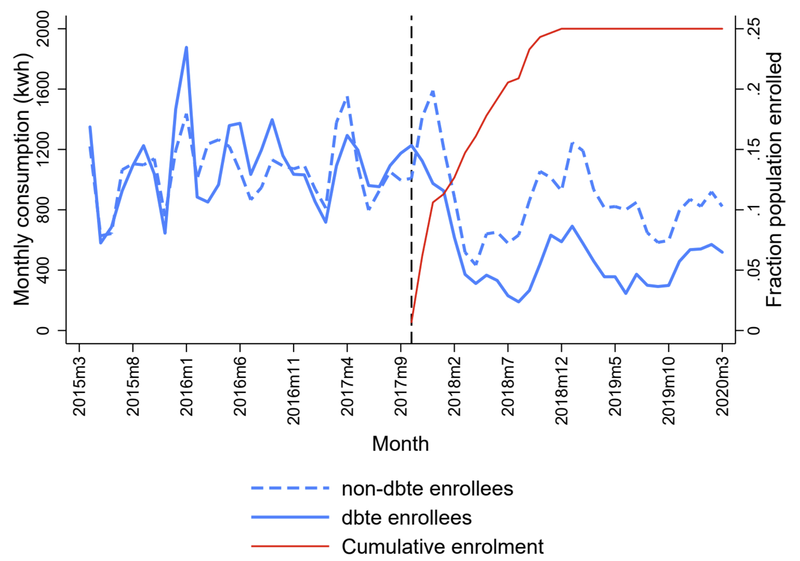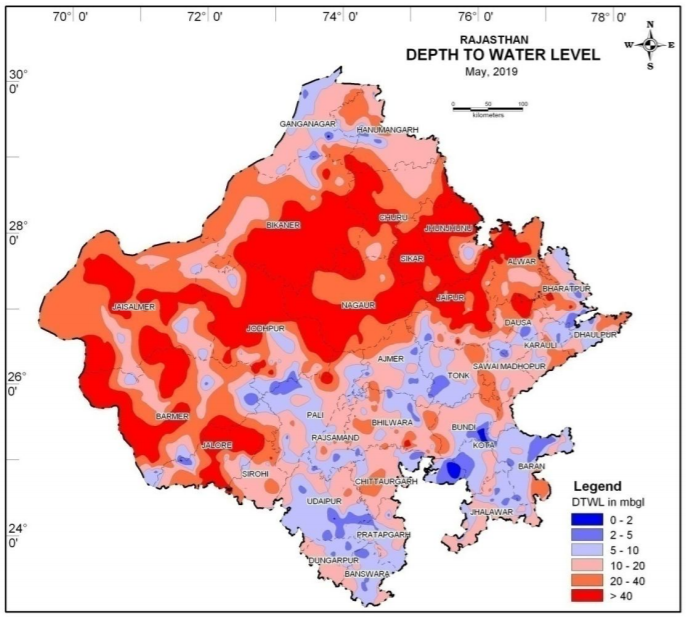Emissions trading to regulate industrial emissions of particulate matter in Surat
(with Michael Greenstone, Nick Ryan and Rohini Pande).
(with Michael Greenstone, Nick Ryan and Rohini Pande).
Emerging economies like India face a dual challenge: Maintain strong economic growth while limiting the pollution generated by industrialization. Particulate air pollution, which is one of the greatest threats to human health globally, is a particularly severe threat in India where it currently reduces average life expectancy by nearly 2 years relative to what it would be if the country met its own guidelines for clean air.
To confront this challenge, India needs strong pollution policies that deliver a safe environment at an affordable cost for industry. Historically, however, the country’s environmental regulations have produced just the opposite. Blunt, inflexible regulations have proven costly for industry and difficult for the government to implement and enforce, resulting in poor compliance and dangerously polluted air.
Market-based environmental regulations have the potential to abate pollution at a low cost but are seldom used in developing countries, where pollution levels are the highest. This project involves the first randomized control trial of emissions trading anywhere in the world, in the form of a pilot project to use a cap-and-trade scheme to regulate industrial emissions in Surat, Gujarat. Eidence suggests the new market reduced air pollution from plants allowed to trade relative to those under the status-quo while also cutting compliance costs. Ongoing work is continuing evaluation of air pollution impacts and examining the effect of different market design decisions.
To confront this challenge, India needs strong pollution policies that deliver a safe environment at an affordable cost for industry. Historically, however, the country’s environmental regulations have produced just the opposite. Blunt, inflexible regulations have proven costly for industry and difficult for the government to implement and enforce, resulting in poor compliance and dangerously polluted air.
Market-based environmental regulations have the potential to abate pollution at a low cost but are seldom used in developing countries, where pollution levels are the highest. This project involves the first randomized control trial of emissions trading anywhere in the world, in the form of a pilot project to use a cap-and-trade scheme to regulate industrial emissions in Surat, Gujarat. Eidence suggests the new market reduced air pollution from plants allowed to trade relative to those under the status-quo while also cutting compliance costs. Ongoing work is continuing evaluation of air pollution impacts and examining the effect of different market design decisions.
Working Paper: Can Pollution Markets Work In Developing Countries? Experimental Evidence from India (With Michael Greenstone, Rohini Pande, Nicholas Ryan)
Project Website: Clean Air Markets
Extensions and Replication:
Government of Punjab, J-PAL South Asia, and EPIC India Launch an Emissions Trading Scheme to Reduce Industrial Air Pollution in the State
Surat’s Emission Trading Scheme to be introduced in Ahmedabad, Rajkot and Vadodara
Related Op-eds and other writing:
Act on This Reaction. Outlook India. February 2021. (with Michael Greenstone)
For breathable air: Environmental data transparency and Star Rating systems will improve air quality. Times of India. May 2019. (with Michael Greenstone)
Why Cleaning Up The Air Isn't An Election Issue In India. Forbes. May 2019. (with Kalikesh Deo)
Recent Press Coverage: Compilation
Project Website: Clean Air Markets
Extensions and Replication:
Government of Punjab, J-PAL South Asia, and EPIC India Launch an Emissions Trading Scheme to Reduce Industrial Air Pollution in the State
Surat’s Emission Trading Scheme to be introduced in Ahmedabad, Rajkot and Vadodara
Related Op-eds and other writing:
Act on This Reaction. Outlook India. February 2021. (with Michael Greenstone)
For breathable air: Environmental data transparency and Star Rating systems will improve air quality. Times of India. May 2019. (with Michael Greenstone)
Why Cleaning Up The Air Isn't An Election Issue In India. Forbes. May 2019. (with Kalikesh Deo)
Recent Press Coverage: Compilation
Information Disclosure and Green Ratings to Reduce Industrial Pollution
(with Rohini Pande, Michael Greenstone and Nick Ryan)
(with Rohini Pande, Michael Greenstone and Nick Ryan)
This project tests whether information disclosure programs – so called third way regulation – could prove to be a low-cost way of increasing the effectiveness of environmental regulation in India and contribute to reducing emission of air pollutants (especially fine particulates) from industry? A rigorous randomized control trial of an information disclosure scheme is being implemented in partnership with the Maharashtra Pollution Control Board. The scheme will provide online industry profiles and report cards that provide information on emissions from regulated firms and their environmental performance relative to their peers. These report cards use manual pollution monitoring data. Concurrently collected data on plant emissions, administrative data on regulator actions and an end-line survey is used to identify the impacts of information release on environmental performance and regulatory behavior. Project Implementation Complete.
Working Paper: In progress (figure shows treatment effect of ratings on regulator actions)
Extensions and Replication:
Launch of Star-Rating Program in Jharkhand, India (see website)
Related Op-eds and other writing:
Maharashtra’s road to cleaner air, curbing pollution runs through innovation, experimentation. FirstPost. February 2020
Press Coverage: In the January 2019-2021 period the Maharashtra Star Rating Scheme received 114 mentions in Maharashtra media, which include 19 different publications in three languages (Marathi, English & Hindi) and has managed to reach more than 7 million people (based on each publication’s daily circulation numbers). Publications that have repeatedly carried articles, op-eds, coverages, and write-ups include Maharashtra Times, Sakal, Loksatta, Lokmat, DNA, Times of India, Indian Express, Hindustan Times, Saamana, The Hitavada amongst other regional dailies.
Extensions and Replication:
Launch of Star-Rating Program in Jharkhand, India (see website)
Related Op-eds and other writing:
Maharashtra’s road to cleaner air, curbing pollution runs through innovation, experimentation. FirstPost. February 2020
Press Coverage: In the January 2019-2021 period the Maharashtra Star Rating Scheme received 114 mentions in Maharashtra media, which include 19 different publications in three languages (Marathi, English & Hindi) and has managed to reach more than 7 million people (based on each publication’s daily circulation numbers). Publications that have repeatedly carried articles, op-eds, coverages, and write-ups include Maharashtra Times, Sakal, Loksatta, Lokmat, DNA, Times of India, Indian Express, Hindustan Times, Saamana, The Hitavada amongst other regional dailies.
Lower Pollution, Longer Lives: Life Expectancy Gains if India Reduced Particulate Matter Pollution
(with Michael Greenstone, Janhavi Nilekani, Rohini Pande, Nicholas Ryan, Anish Sugathan).
(with Michael Greenstone, Janhavi Nilekani, Rohini Pande, Nicholas Ryan, Anish Sugathan).
India’s population is exposed to dangerously high levels of air pollution. Using a combination of ground-level in situ measurements and satellite-based remote sensing data from the existing literature, this paper estimates that 660 million people, over half of India’s population, live in areas that exceed the Indian National Ambient Air Quality Standard for fine particulate pollution. Reducing pollution in these areas to achieve the standard would, we estimate, increase life expectancy for these Indians by 3.2 years on average for a total of 2.1 billion life years. We outline directions for environmental policy to start achieving these gains.
Related Resources: The Air Quality Life Index
Published Paper: Lower Pollution, Longer Lives: Life Expectancy Gains if India Reduced Particulate Matter Pollution. 2015. Economic and Political Weekly. Vol. L (8). pp 40-46. (with Michael Greenstone, Janhavi Nilekani, Rohini Pande, Nicholas Ryan, Anish Sugathan)
Selected Press
Times of India
International Business Times
Two in Hindustan Times, Hindustan Times
Quartz
The Hans India
Irish Independent (Press Association)
Economic Times
The Hindu
NDTV
UPI
The Weather Network
NY Times Editorial
Deutsche Welle
NewX
One India
Shahernama
AP story in: US News & World Report, Fox Business, Miami Herald, Bangkok Post, Herald Standard, Chicago Tribune, The Tribune, Huffington Post, ABC News, Philippine Star, South China Morning Post, Asian Image, Pennsylvania Tribune, RYOT, Seattle Times, Arkansas Online, Saudi Gazette, Macau Daily Times
PTI story in: Economic Times, NDTV, Financial Express, The Hindu, State Times, The Health Site, Khaleej Times, International Business Times, DNA India, Business Standard, Deccan Herald, Asian Age, Zee News India, IBN Live, Huffington Post
IANS story in Economic Times, Indian Express, Times of India, The Shillong Times, Khaleej Times, Silicon India
Published Paper: Lower Pollution, Longer Lives: Life Expectancy Gains if India Reduced Particulate Matter Pollution. 2015. Economic and Political Weekly. Vol. L (8). pp 40-46. (with Michael Greenstone, Janhavi Nilekani, Rohini Pande, Nicholas Ryan, Anish Sugathan)
Selected Press
Times of India
International Business Times
Two in Hindustan Times, Hindustan Times
Quartz
The Hans India
Irish Independent (Press Association)
Economic Times
The Hindu
NDTV
UPI
The Weather Network
NY Times Editorial
Deutsche Welle
NewX
One India
Shahernama
AP story in: US News & World Report, Fox Business, Miami Herald, Bangkok Post, Herald Standard, Chicago Tribune, The Tribune, Huffington Post, ABC News, Philippine Star, South China Morning Post, Asian Image, Pennsylvania Tribune, RYOT, Seattle Times, Arkansas Online, Saudi Gazette, Macau Daily Times
PTI story in: Economic Times, NDTV, Financial Express, The Hindu, State Times, The Health Site, Khaleej Times, International Business Times, DNA India, Business Standard, Deccan Herald, Asian Age, Zee News India, IBN Live, Huffington Post
IANS story in Economic Times, Indian Express, Times of India, The Shillong Times, Khaleej Times, Silicon India
Localized Pollution Hotspots: Inferences from a fine-grained air quality monitoring study in Delhi
Shiva Iyer, Ananth Balashankar (New York University), William H. Aeberhard (Swiss Data Science Center) Ulzee An (University of California Los Angeles), Sameeksha Jain (Evidence for Policy Design India at IFMR Lead), Sujoy Bhattacharya (Columbia University), Giuditta Rusconi (Evidence for Policy Design India at IFMR Lead), Anant Sudarshan (University of Chicago), Rohini Pande (Yale University), Lakshminarayan Subramanian (New York University)
Shiva Iyer, Ananth Balashankar (New York University), William H. Aeberhard (Swiss Data Science Center) Ulzee An (University of California Los Angeles), Sameeksha Jain (Evidence for Policy Design India at IFMR Lead), Sujoy Bhattacharya (Columbia University), Giuditta Rusconi (Evidence for Policy Design India at IFMR Lead), Anant Sudarshan (University of Chicago), Rohini Pande (Yale University), Lakshminarayan Subramanian (New York University)
Localized pollution hotspots within a city, each emanating from sources with a small coverage over space and time can result in varied human exposure to poor air quality. In this project, we study pollution hot-spots in the city of Delhi over 30-month period, from May 1, 2018 till Nov 1, 2020, using a mixture of coarse (in both space and time) network of air quality monitoring stations by the government, and a fine network of low-cost monitors that we installed to monitor PM concentrations at much finer spatial resolutions. The existing network by the government, while quantifying air-quality in an extremely detailed manner in terms of measuring a large number of components in the air, only provides a macro level picture of air quality in the city. We find that augmenting such network with low-cost handheld air quality monitors, without significant additional cost, can significantly enhance our interpretation of air quality and understanding of localized levels of air pollution to which citizens are subject on a daily basis. Specifically we demonstrate (1) the feasibility of augmenting existing large-scale monitoring networks by local governments for finer-grained measurements in order to study pollution hotspots (2) classification of well-defined types of hotspots and (3) identifying real observed incidents with those types.
Published Paper: Iyer, S.R., Balashankar, A., Aeberhard, W.H. et al. Modeling fine-grained spatio-temporal pollution maps with low-cost sensors. npj Clim Atmos Sci 5, 76 (2022).
Selected Press:
Study suggests use of low-cost sensors to improve forecasting of air pollution. Times of India
किफायती एयर सेंसर नेटवर्क जो प्रदूषण का सटीक पूर्वानुमान लगा सकता है|डाउन टू अर्थ
Selected Press:
Study suggests use of low-cost sensors to improve forecasting of air pollution. Times of India
किफायती एयर सेंसर नेटवर्क जो प्रदूषण का सटीक पूर्वानुमान लगा सकता है|डाउन टू अर्थ
Rationing the Commons
Nicholas Ryan (Yale University) and Anant Sudarshan
Nicholas Ryan (Yale University) and Anant Sudarshan
Common resources may be managed with inefficient policies for the sake of equity. We study how rationing the commons shapes the efficiency and equity of resource use, in the context of agricultural groundwater use in Rajasthan, India. We find that rationing binds on input use, such that farmers, despite trivial prices for water extraction, use roughly the socially optimal amount of water on average. The rationing regime is still grossly inefficient, because it misallocates water across farmers, lowering productivity. Pigouvian reform would increase agricultural surplus by 12% of household income, yet fall well short of a Pareto improvement over rationing.
Published Paper:
Rationing the commons. 2022. Journal of Political Economy. 130:1. pp. 210 – 257 (With Nicholas Ryan) [Appendix]
Related Op-eds and other writing:
Do India's Farmers Use Too Much Water? VoxDev
Rationing the commons. 2022. Journal of Political Economy. 130:1. pp. 210 – 257 (With Nicholas Ryan) [Appendix]
Related Op-eds and other writing:
Do India's Farmers Use Too Much Water? VoxDev
Subsidy Reform and Farmer Welfare
Nicholas Ryan (Yale University) and Anant Sudarshan
Nicholas Ryan (Yale University) and Anant Sudarshan
Agricultural electricity subsidies in India have been meant as a lifeline to farmers, allowing the spread of irrigation using electric pumps to extract groundwater. Instead, they have locked rural India into a destructive cycle of groundwater depletion and bad power supply. Farmers, given electricity nearly for free, use too much, draining groundwater, worsening poverty, and bankrupting electricity distributors. In turn, distribution companies resort to rationing supply.
Economic theory suggests that, given the distortion caused by pricing power below cost, a Pareto improvement is possible. Both farmers and the distribution companies could be made better off if subsidies were given as a lump-sum transfer, instead of being tied to power use, which promotes over-consumption. In collaboration with the Governments of Andhra Pradesh and Punjab we are designing and testing variants of this type of subsidy reform.
Economic theory suggests that, given the distortion caused by pricing power below cost, a Pareto improvement is possible. Both farmers and the distribution companies could be made better off if subsidies were given as a lump-sum transfer, instead of being tied to power use, which promotes over-consumption. In collaboration with the Governments of Andhra Pradesh and Punjab we are designing and testing variants of this type of subsidy reform.
Allocating Clean Water to the Rural Poor
Fiona Burlig, Amir Jina, and Anant Sudarshan
Fiona Burlig, Amir Jina, and Anant Sudarshan
How should scarce resources be allocated in developing countries? Weitzman (1977)
highlights a trade-off between prices, which generate allocative efficiency, and quotas,
which have desirable distributional consequences. In partnership with a private company, we implement a cluster-randomized trial supplying clean water to rural Odisha, India, to measure the relative effectiveness of different allocation mechanisms. We measure the price elasticity of demand for clean water, health effects from consuming clean water, and the extent to which liquidity constraints and intra-household inefficiencies reduce consumption using both house-hold survey and administrative data. We randomized 151 villages into a control group and multiple treatment arms: (i) discounts; (ii) a monthly quota; and (iii) an exchangeable quota, where unused allocation can be exchanged for cash. We randomize which households will receive treatment within a village. We find that treatment induces a high degree of uptake, with both quota groups obtaining the most water. Adoption is driven by the extensive margin, with households relatively inelastic about quantity. The fact that discount and exchange groups face the same marginal incentive but have very different uptake implies the existence of strong liquidity constraints. Preliminary results on health suggest that households facing any price show stronger effects of clean water adoption compared to the free allocation group.
highlights a trade-off between prices, which generate allocative efficiency, and quotas,
which have desirable distributional consequences. In partnership with a private company, we implement a cluster-randomized trial supplying clean water to rural Odisha, India, to measure the relative effectiveness of different allocation mechanisms. We measure the price elasticity of demand for clean water, health effects from consuming clean water, and the extent to which liquidity constraints and intra-household inefficiencies reduce consumption using both house-hold survey and administrative data. We randomized 151 villages into a control group and multiple treatment arms: (i) discounts; (ii) a monthly quota; and (iii) an exchangeable quota, where unused allocation can be exchanged for cash. We randomize which households will receive treatment within a village. We find that treatment induces a high degree of uptake, with both quota groups obtaining the most water. Adoption is driven by the extensive margin, with households relatively inelastic about quantity. The fact that discount and exchange groups face the same marginal incentive but have very different uptake implies the existence of strong liquidity constraints. Preliminary results on health suggest that households facing any price show stronger effects of clean water adoption compared to the free allocation group.
